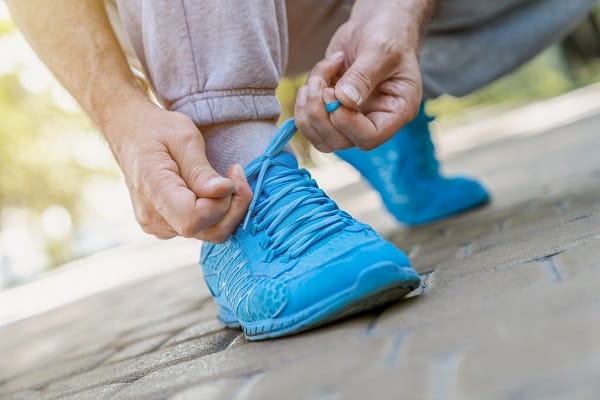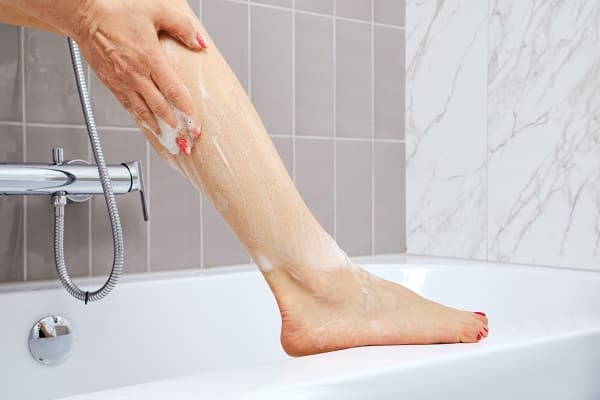As seniors age, foot care becomes increasingly important in helping to maintain mobility and health. Unfortunately, many people don’t take proper precautions when it comes to looking after their feet, which can lead to some serious issues down the line. That’s why this guide was created—to provide insights on how seniors can better look after their feet and keep them in top shape for as long as possible. So whether you or your loved one is an elder and want to learn about proper preventative measures or you just want an idea of what foot care for seniors looks like at its best, continue reading!
Age-Related Changes In Feet
As you age, your feet undergo a number of changes, some of which can cause discomfort or even lead to more serious issues. One of the most common changes is a decrease in the thickness of the fatty pads on the bottoms of your feet, which can result in less cushioning and make it more difficult to walk or stand for long periods of time. In addition, our skin becomes thinner and more prone to injury, while our nails may thicken and become brittle.
Arthritis and other joint problems may also develop, adding to the challenges of maintaining healthy feet. However, with proper foot care and regular checkups with a podiatrist, many of these issues can be managed effectively.
Common Foot Problems In Seniors
Along with the natural changes in feet, as you get older, there are a number of common conditions which can affect seniors. These include bunions, corns, calluses, ingrown toenails, plantar fasciitis, and hammertoe. While some of these conditions can be managed with over-the-counter products, others may require professional treatment and care.
In some cases, foot problems can be indicative of other underlying health issues, so it’s important to consult with a doctor or podiatrist if you notice any changes in your feet or experience persistent pain.
Importance Of Regular Foot Examinations
Regular foot examinations are crucial to detect early signs of foot problems. Seniors, or their caregivers, should perform routine checks for any changes in color, temperature, swelling, cuts, or sores. Monitoring the condition of toenails for signs of fungal infections is also essential.
In addition to self-checks, regular visits to a podiatrist are recommended. A podiatrist can provide a more thorough examination, diagnose any underlying issues, and recommend appropriate treatments or preventative measures.
Proper Footwear For Seniors
Footwear plays a significant role in foot health. Ill-fitting or inappropriate shoes can lead to a host of foot problems, from corns and calluses to more serious issues like falls due to instability. For seniors, the right shoes should provide good support, have non-slip soles, and have enough room to accommodate changes in foot size or shape. Comfort should never be compromised for style, and it is beneficial to have footwear professionally fitted for optimal comfort and support.
If you are having difficulty finding shoes that fit properly, look for retailers specializing in custom-made or wide-fitting styles. They will typically have a range of styles to choose from that offer comfort and support.
Daily Foot Hygiene Practices
Maintaining good foot hygiene is a cornerstone of healthy feet. It’s not just about keeping the feet clean but also about preventing infections and other foot problems. Washing the feet daily with warm water and mild soap can help remove dirt and prevent odor.
Drying the feet, especially between the toes, is equally important. It can prevent the growth of fungus, which thrives in moist environments. After washing, gently pat the feet dry with a clean towel, ensuring you dry all areas and crevices.
Essential Foot Exercises For Seniors
Regular physical activity can help maintain foot health by improving blood circulation and strengthening the muscles and bones in the feet. Simple exercises, such as toe curls, heel and toe raises, or ankle rotations, can go a long way toward improving foot health.
Engaging in low-impact activities such as swimming, cycling, or yoga can also help. However, it’s important for seniors to consult their healthcare provider before starting any new exercise regimen, especially if they have chronic health conditions.
Healthy Diet For Healthy Feet
The health of your feet, like the rest of your body, is also influenced by your diet. Consuming a balanced diet rich in essential vitamins and minerals can help maintain good foot health. For instance, calcium and vitamin D are crucial for bone health, while omega-3 fatty acids can help reduce inflammation.
Foods rich in these nutrients include dairy products, fatty fish, fruits, vegetables, and whole grains. Seniors should also stay well-hydrated as dehydration can cause dry skin, increasing the risk of cracks and foot infections.
The Role Of Pedicures In Senior Foot Care
Regularly booking pedicures can also help keep the feet clean and healthy. A professional pedicurist will take care of your toenails, trim them properly, and ensure they are filed correctly. This can prevent ingrown toenails or other infections caused by improper nail cutting.
In addition, many salons offer special treatments such as paraffin baths or foot massages, which can help reduce inflammation and improve circulation. But, it’s important to note that seniors should avoid pedicures if they suffer from any skin condition, such as warts or fungal infections.
The Importance Of Moisturizing Your Feet
In addition to the above care tips, seniors should also ensure they moisturize their feet regularly. Dry skin can lead to cracks and allow bacteria to penetrate the epidermis, leading to infection. Applying an appropriate moisturizer daily can help prevent dryness and keep your feet soft and healthy.
When selecting the right moisturizer, seniors should look for products that contain hydrating ingredients such as shea butter and glycerin. These ingredients will help lock in moisture and protect the skin from dryness. Pay special attention to areas prone to dryness, such as heels or between toes.
When To Seek Professional Help
Recognizing when to seek professional help is a crucial aspect of foot care. Conditions such as persistent pain, swelling, numbness, or changes in skin color require immediate medical attention. Regular checkups with a podiatrist are also essential, as they can help identify and treat foot problems before they become serious.
Regular consultations with a podiatrist can also help seniors better understand their foot health. They can provide personalized advice on footwear, hygiene practices, and exercises based on individual needs and medical history.
Follow This Guide To Proper Foot Care For Seniors!
As you finish up this guide to foot care for seniors, it’s clear that taking care of your feet involves more than just a good pair of shoes. It involves regular examinations, maintaining hygiene, staying active, and eating a healthy diet. It also means being aware of when to seek professional help. And always remember, good foot health contributes significantly to the overall well-being and independence of seniors. So, take the time to care for your feet. They’ve carried you a long way, and with the proper care, they’ll continue to do so for years to come!
Resources
- American Podiatric Medical Association (APMA): Foot Health [Link: www.apma.org/Patients/FootHealth.cfm]
- American Orthopaedic Foot & Ankle Society: FootCareMD [Link: www.footcaremd.org/]
- Mayo Clinic: Foot pain? Headache? Expert Advice on what to do. [Link: www.mayoclinic.org/symptoms/foot-pain/basics/when-to-see-doctor/sym-20050792]









